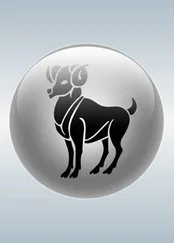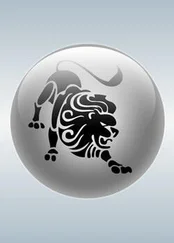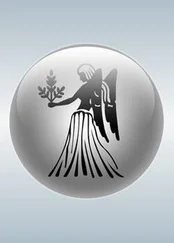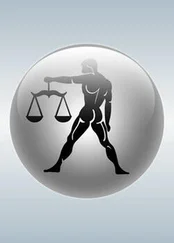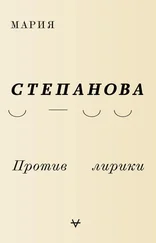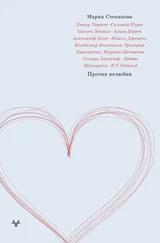There’s a myth connected with this film. In the end brave Chapaev, the hero of legends and jokes, dies. Injured, he swims the icy Ural river (“The water colder than a bayonet” — so the song goes), and the enemy shoots at him as he swims and we know he won’t survive. In more than one memoir from the time, the author tells the story of going to see the film three or four times, because it was rumored that in a cinema somewhere on the edge of town Chapaev swims free.
Stalin’s order concerning the poet Mandelstam, which led to his exile, was “isolate and preserve.” This feels like a good summary of Cornell’s long arduous years of hard labor. For him, to isolate (to pick out, reserve, and place in the correct context; to surround with correspondences and rhymes, bottle up, and seal; to find a space where neither moth nor rust doth corrupt, and where thieves do not break through nor steal ) meant to preserve. In the Old Church Slavonic version of the Gospel of Matthew the treasures must be “hidden,” so “to preserve” in this interpretation means “to hide,” whereas in the King James Version the phrase used is “lay up,” as you might “lay up” supplies for winter in an attic or a barn, or in a vast warehouse. One such warehouse was the place of a revelation that changed Cornell’s life.
He told the story of this single ineffable moment of vision more than once. Circumstances had made him the breadwinner for his family, providing for his mother and invalid brother, and his job as a sales rep involved trawling round the little Manhattan fabric shops with samples. One evening at sunset, when all the windows of the big warehouse on West 54th Street were aflame with light, he saw in each window the image of Fanny Cerrito, the Italian ballerina, famous in the 1840s. She stood up on the roof of the building, and at the same time she was closing the blinds in hundreds of windows. “I heard a voice, and I saw a light,” as he said about another similar incident. After this he had many more visions, and became a connoisseur of these moments of sudden transformation. Cerrito was born in Naples in 1817. Cornell’s series of Neapolitan boxes (maps, views of Vesuvius, the blue of the sky) offered her a new and eternal home.
In Cornell’s diaries a passionate love of the past combines with a hunger for new and related practices to his. He is absolutely a contemporary artist: he reads Breton and Borges, he is friends with Duchamp, he follows Dalí’s work with interest, he is in correspondence with half the art world, he cites Magritte (he has a grief-filled collage dedicated to his brother’s memory with Magritte’s locomotive flying out of its fireplace like a bird let loose from its cage). He makes reference to Brancusi and Juan Gris, and his library of books on contemporary art is worn thin with constant handling. This is his context, he is in conversation with these artists. The peculiar thing is, of course, that no one ever really answers him. He knows all of them, and yet he is barely recognized — he spends his life in a vague periphery. The history of art eventually incorporated him, but he was still somehow the odd one out, like the obligatory weirdo at a fashionable gallery opening.
It’s not surprising: people and animals can sense an outsider. The task of the leader of any regime, any avant-garde, is to change the world: familiar objects need to be transformed, or to be viciously mocked so they are forced to renew themselves. Cornell used the tactics of the avant-garde in order to achieve something quite different; his colleagues sensed this and treated him with justifiable distrust. Duchamp’s hat rack, with its horns turned outward, conveyed its essentially alien nature (its “estrangement,” as the Formalists would have described it), but for Cornell the holiness of the ready-made was inviolable. In a world in which the artist had a right to everything, he behaved with the scrupulousness of the collector, keen to preserve his property in its very best state. His found objects were not the starting point for further distortion, but much-loved creatures with their own subjectivity. In a sense he continued C. S. Lewis’s theory that pets who are drawn into a loving relationship with a human grow their own soul, and in doing so are given a chance at eternal salvation. For this to happen, as I understand it, the dog or the canary doesn’t even have to feel love, but just has to have love poured over it by the nearest human. Cornell’s objects are redeemed in life in the same way: simply by being so very loved.
Love is an ungainly and absurd sentiment, invented to instill a certain amount of resignation and self-irony in a person; a state of lost equilibrium, created by the ridiculous situation and the inability to behave like a free and weightless being. It’s too much concerned with weight, it bends the lover to the ground, to his own weakness and mortality. It’s heavy to carry, even heavier to witness. I believe this partly explains Cornell’s incomplete reputation, its slightly crooked nature. Unlike Hopper or O’Keefe, with their finished work, which has traveled a long way from its author, Cornell’s boxes remain his “little secrets,” the cast-offs of a barely concealed passion. The viewer becomes witness to something almost too intimate, like a domestic peep show involving plush teddy bears, but devoid of any eroticism (eroticism would be more ordinary). Cornell is simultaneously too mad and too simplehearted to be taken seriously. These qualities are usually enough to relegate an author to the nursery, the pink bookcase full of tales of gallant knights; to the children, waiting patiently for the fearful tales of the Brothers Grimm and Hans Christian Andersen.
If we consider art as a profession then Cornell was never allowed to join its trade union. He remained an awkward dilettante, the one who tries to fit in and fails: he lacked something and so the big children wouldn’t play with him. Or perhaps he had too much of something: he was too fervent maybe. In his relations with life he behaved like he had a schoolgirl crush, like when a younger girl in a nineteenth-century novel followed a favored older girl around, trying to please her, keeping the precious ribbon she dropped. The chill of the experiment, which made twentieth-century art bearable, had no hold on his work, and this is important: Cornell in the world of art is rather like the huge but herbivorous elephant, surrounded by predators.
There is a famous story about the emigrant Vladimir Nabokov who once applied to join the literature department of a certain university. One of the panel was against the appointment. A clever and witty man, he noted that Nabokov was indubitably a “big” writer, but then the elephant was a big animal: you wouldn’t appoint it to teach zoology. This famous put-down is almost better known in Russia than the life’s work of this witty scholar. Every time I remember the story I am filled with pity for the shelterless elephant, who had neither use for nor satisfaction in his own greatness. Cornell was a similarly large beast, with no space for him in the collective landscape, and this was hardly without cause. But it didn’t seem to hold him back. In one of his late notes he writes of how he has a real memory of seeing another of his idols, Houdini, at the Hippodrome — and Houdini had made an elephant disappear.
The predator senses its prey from a long way off. In the letters and memoirs of those who knew him there is often a thick cloud of embarrassment. The weight of ecstasy the artist felt at each new manifestation of the material world was not easy to tolerate: for him life seemed to consist entirely of desserts and exclamation marks, pink foam and balloons. As I read his diaries, letters, working notes, the exclamation marks, and the revelations — daily, hourly, inexhaustibly — this incontinent enthusiasm began to irritate as much as the little French words Cornell used to decorate his suburban life. His excesses went well beyond the pale of normal behavior and into areas where none of his contemporaries would have strayed: enthusiasm as a way of surviving reality had been discredited, thrown out onto the heap, it was the preserve of dilettantes and those on the margins. The constant will to ecstasy had been as natural as breathing in the age of Goethe and his Russian counterpart, Karamzin, but one hundred years later an inability to “distance” oneself was frowned upon. Marianne Moore, whose poetry Cornell loved, was in a correspondence with him, and happily accepted his gifts of boxes with their precious contents, but when he asked her to write him a reference for a very important grant, she reacted as if this might have compromised her in some way.
Читать дальше




